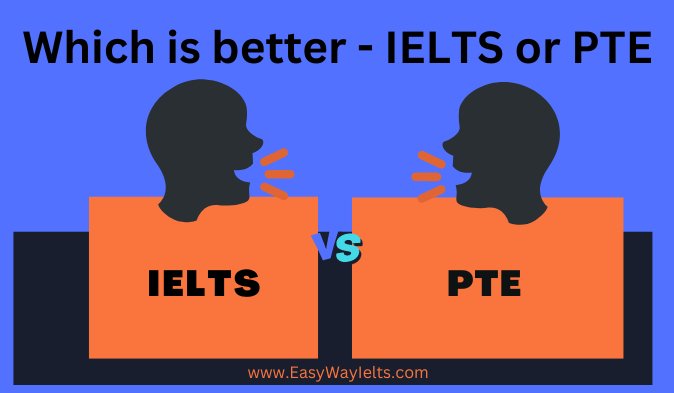Is CELPIP easier than IELTS? In the realm of English language proficiency exams, CELPIP and IELTS stand as two prominent choices for individuals seeking to demonstrate their language skills for immigration, academic, or professional purposes. However, the question often arises: Is CELPIP easier than IELTS?
In this article, we embark on a comprehensive exploration of the similarities, differences, and perceived challenges of the CELPIP and IELTS exams. By dissecting various aspects of both tests, we aim to provide clarity and insight into which exam may be a better fit for your goals and proficiency level.
Whether you’re considering which exam to take for immigration to Canada or pursuing higher education opportunities abroad, join us as we delve into the complexities of CELPIP and IELTS, and uncover the truth behind the question: Is CELPIP truly easier than IELTS?
Structure and Format of CELPIP and IELTS Exams
Both the CELPIP (Canadian English Language Proficiency Index Program) and the IELTS (International English Language Testing System) exams assess English language proficiency, but they have distinct structures and formats.
Structure and Format of CELPIP Exam
- Sections – The CELPIP exam consists of four sections: Listening, Reading, Writing, and Speaking.
- Listening – The Listening section involves listening to audio recordings and answering questions based on the content. Test-takers listen to conversations, lectures, and discussions related to daily life and work situations.
- Reading – In the Reading section, test-takers read passages and answer questions to assess their comprehension skills. The passages cover a range of topics, including newspapers, advertisements, and workplace-related documents.
- Writing – The Writing section requires test-takers to complete two tasks. Task 1 involves writing an email, while Task 2 requires writing a response to a survey question or a problem-solving task.
- Speaking – In the Speaking section, test-takers engage in speaking tasks with a computer-based interface. They may be asked to describe a personal experience, express an opinion, or respond to a question.
Latest Update for 2025: As of early 2025, CELPIP has implemented an AI-hybrid model for assessing the Writing section, where AI initially evaluates responses before a human examiner reviews them for accuracy and fairness. This change aims to speed up result processing while maintaining reliability.
Structure and Format of the IELTS Exam
- Sections – The IELTS exam also consists of four sections: Listening, Reading, Writing, and Speaking.
- Listening – Similar to CELPIP, the Listening section of IELTS involves listening to recordings and answering questions. Test-takers listen to conversations, monologues, and discussions on various topics.
- Reading – In the Reading section, test-takers read passages and answer questions to demonstrate their reading comprehension skills. The passages cover academic, general interest, and workplace-related topics.
- Writing – The Writing section requires test-takers to complete two tasks. Task 1 involves describing visual information, such as charts or graphs, while Task 2 involves writing an essay in response to a prompt.
- Speaking – In the Speaking section, test-takers engage in face-to-face interviews with an examiner. They discuss familiar topics, express opinions, and participate in a structured conversation.
Latest Update for 2025: IELTS continues to offer both paper-based and computer-delivered options globally, with enhanced digital tools for faster result delivery in select locations. Additionally, IRCC has announced that the TOEFL Essentials test will soon be accepted as an alternative for permanent residence applications, expanding options beyond CELPIP and IELTS.
Comparison of IELTS & CELPIP
- Both exams assess the same language skills (Listening, Reading, Writing, and Speaking) but have slightly different formats for the Speaking section.
- CELPIP uses a computer-based interface for the Speaking section, while IELTS involves face-to-face interaction with an examiner.
- The content and difficulty level of the exam questions may vary between CELPIP and IELTS, but both exams aim to measure proficiency in real-life situations.
Latest Update for 2025: CELPIP is now accepted for Australian visa purposes by the Department of Home Affairs, broadening its international appeal while remaining tailored for Canadian immigration. Both tests continue to be equally weighted in the iIRCC’s Comprehensive Ranking System (CRS) for Express Entry.
Comparing Scoring Systems and Difficulty Levels
As a student who has taken both the IELTS and CELPIP exams, I can provide insight into the scoring systems and difficulty levels of each test:
Scoring Systems
- IELTS – In the IELTS exam, each section (Listening, Reading, Writing, and Speaking) is scored on a scale from 0 to 9 bands. Overall band scores are calculated by averaging the scores of each section, rounded to the nearest half or whole band.
- CELPIP – The CELPIP exam also uses a scale for scoring, ranging from 1 to 12 for each component (Listening, Reading, Writing, and Speaking). The total score is calculated by averaging the scores of the four components.
Both tests are converted to the Canadian Language Benchmark (CLB) levels for IRCC purposes, ensuring fair comparison.
Difficulty Levels
- IELTS – The IELTS exam is known for its academic focus and can be challenging, particularly in the Reading and Writing sections. The Listening section may also present difficulties due to variations in accents and speed of speech.
- CELPIP – The CELPIP exam is designed to assess English language proficiency in real-life situations, which may make it more accessible for some test-takers. However, the Speaking section, conducted via computer-based interaction, can present challenges in terms of fluency and spontaneity.
Comparison
- Both exams have their own unique scoring systems and criteria for evaluating language proficiency. While IELTS provides a more detailed breakdown of scores with bands for each section, CELPIP offers a simpler scale from 1 to 12.
- In terms of difficulty levels, IELTS tends to have a reputation for being more challenging, especially for those who are not accustomed to academic English. CELPIP, on the other hand, focuses on practical language skills and may be perceived as more straightforward by some test-takers.
- Ultimately, the difficulty of each exam varies depending on individual strengths and weaknesses in different language skills. Some test-takers may find certain sections of one exam easier than others based on their familiarity with the content and format.
- Both the IELTS and CELPIP exams have their own unique characteristics and challenges. As a student who has experienced both, I recognize the importance of thorough preparation and understanding the specific requirements of each exam to achieve success.
Latest Update for 2025: For Post-Graduation Work Permit (PGWP) applications as of November 1, 2024, IRCC now requires minimum language proficiency levels (e.g., CLB 7 for university graduates and CLB 5 for college graduates). Both IELTS General Training and CELPIP-General are accepted, with scores directly impacting eligibility.
Factors to Consider When Choosing Between CELPIP and IELTS
When choosing between the CELPIP (Canadian English Language Proficiency Index Program) and IELTS (International English Language Testing System) exams, several factors should be considered to make an informed decision:
- Purpose of the Exam – Determine the purpose for taking the exam. If you are applying for immigration to Canada, specific Canadian immigration programs may require either CELPIP or IELTS scores. Research the specific requirements of your immigration program to ensure you choose the appropriate exam.
- Preferred Test Format – Consider your comfort level with the test format of each exam. CELPIP is entirely computer-based, including the Speaking component, while IELTS involves face-to-face interaction with an examiner for the Speaking test. Choose the format that aligns with your preferences and testing abilities.
- Scoring System – Understand the scoring systems of both exams. IELTS uses a band score system from 0 to 9 for each section, while CELPIP uses a scale from 1 to 12. Determine which scoring system you find easier to understand and interpret based on your goals and requirements.
- Test Availability and Accessibility – Check the availability and accessibility of test centers for both exams in your location. Consider factors such as test dates, test center locations, and registration procedures to ensure convenience and flexibility in scheduling your exam. CELPIP is primarily available in Canada and select international locations like India, the UAE, the Philippines, and the USA.
- Preparation Resources – Evaluate the availability and quality of preparation resources for each exam. Look for official study materials, practice tests, and preparation courses that can help you effectively prepare for the exam format and content.
- Language Skills Strengths and Weaknesses – Assess your strengths and weaknesses in the four language skills tested on both exams (Listening, Reading, Writing, and Speaking). Choose the exam that aligns with your strengths and allows you to showcase your language proficiency to the best of your ability.
- Cost – Consider the cost of each exam, including registration fees, study materials, and any additional expenses such as travel to the test center. Compare the costs of both exams and determine which option fits within your budget.
- Validity Period – Check the validity period of exam scores for each exam. Some institutions or immigration programs may have specific requirements regarding the validity period of exam scores. Choose the exam with a validity period that meets your needs and timeline. Scores are generally valid for two years.
Latest Update for 202WitIRCC’ss’s 2025-2027 Immigration Levels Plan emphasizing higher language proficiency for economic integration, candidates achieving CLB 9 or above in either test may gain an edge in category-based Express Entry draws for in-demand occupations like healthcare and technology.
By carefully considering these factors, you can make an informed decision about whether to choose the CELPIP or IELTS exam based on your individual circumstances, preferences, and goals.
Deciding between the CELPIP and IELTS exams is a significant step in your journey to demonstrate English language proficiency for immigration, academic, or professional purposes.
Through the exploration of factors such as test format, scoring system, availability, and personal preferences, you can make an informed decision that best aligns with your goals and aspirations.
While the question of whether CELPIP is easier than IELTS may vary depending on individual circumstances, both exams offer unique opportunities and challenges.
Ultimately, the key lies in thorough preparation, understanding the specific requirements of each exam, and selecting the option that allows you to showcase your language skills with confidence and success.
By equipping yourself with knowledge and insights into the differences between CELPIP and IELTS, you are empowered to make the choice that paves the way for your desired outcomes and future endeavours in the global landscape of English language proficiency testing.
Latest Updates for CELPIP and IELTS in 2025
- New Test Acceptance: IRCC will soon accept the TOEFL Essentials test for permanent residence applications, providing an additional option alongside CELPIP and IELTS.
- PGWP Language Requirements: Starting November 1, 2024, PGWP applicants must meet minimum CLB levels using IELTS General, CELPIP-General, or PTE Core.
- CELPIP Enhancements: Introduction of AI-hybrid scoring for Writing and acceptance for Australian visas.
- Express Entry Focus: Higher CLB scores prioritized in 2025 category-based draws to address labour shortages.



